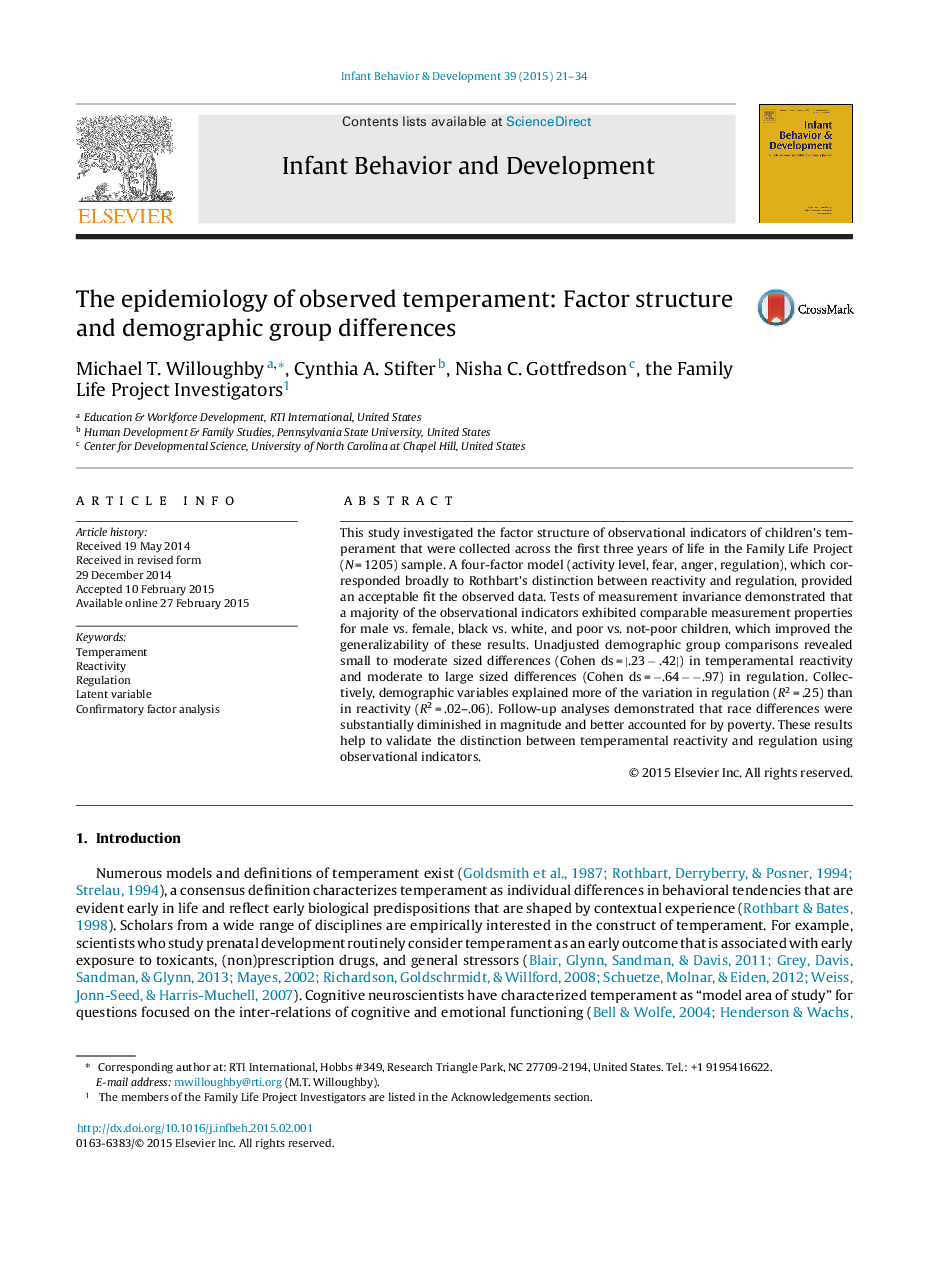| کد مقاله | کد نشریه | سال انتشار | مقاله انگلیسی | نسخه تمام متن |
|---|---|---|---|---|
| 917191 | 1473421 | 2015 | 14 صفحه PDF | دانلود رایگان |
• A four-factor model of observed temperamental reactivity and regulation fit the data well.
• The model fit equally well for children of different gender, race, and income levels.
• Demographic group differences were more pronounced for regulation than reactivity.
This study investigated the factor structure of observational indicators of children's temperament that were collected across the first three years of life in the Family Life Project (N = 1205) sample. A four-factor model (activity level, fear, anger, regulation), which corresponded broadly to Rothbart's distinction between reactivity and regulation, provided an acceptable fit the observed data. Tests of measurement invariance demonstrated that a majority of the observational indicators exhibited comparable measurement properties for male vs. female, black vs. white, and poor vs. not-poor children, which improved the generalizability of these results. Unadjusted demographic group comparisons revealed small to moderate sized differences (Cohen ds = |.23 − .42|) in temperamental reactivity and moderate to large sized differences (Cohen ds = −.64 − −.97) in regulation. Collectively, demographic variables explained more of the variation in regulation (R2 = .25) than in reactivity (R2 = .02–.06). Follow-up analyses demonstrated that race differences were substantially diminished in magnitude and better accounted for by poverty. These results help to validate the distinction between temperamental reactivity and regulation using observational indicators.
Journal: Infant Behavior and Development - Volume 39, May 2015, Pages 21–34
